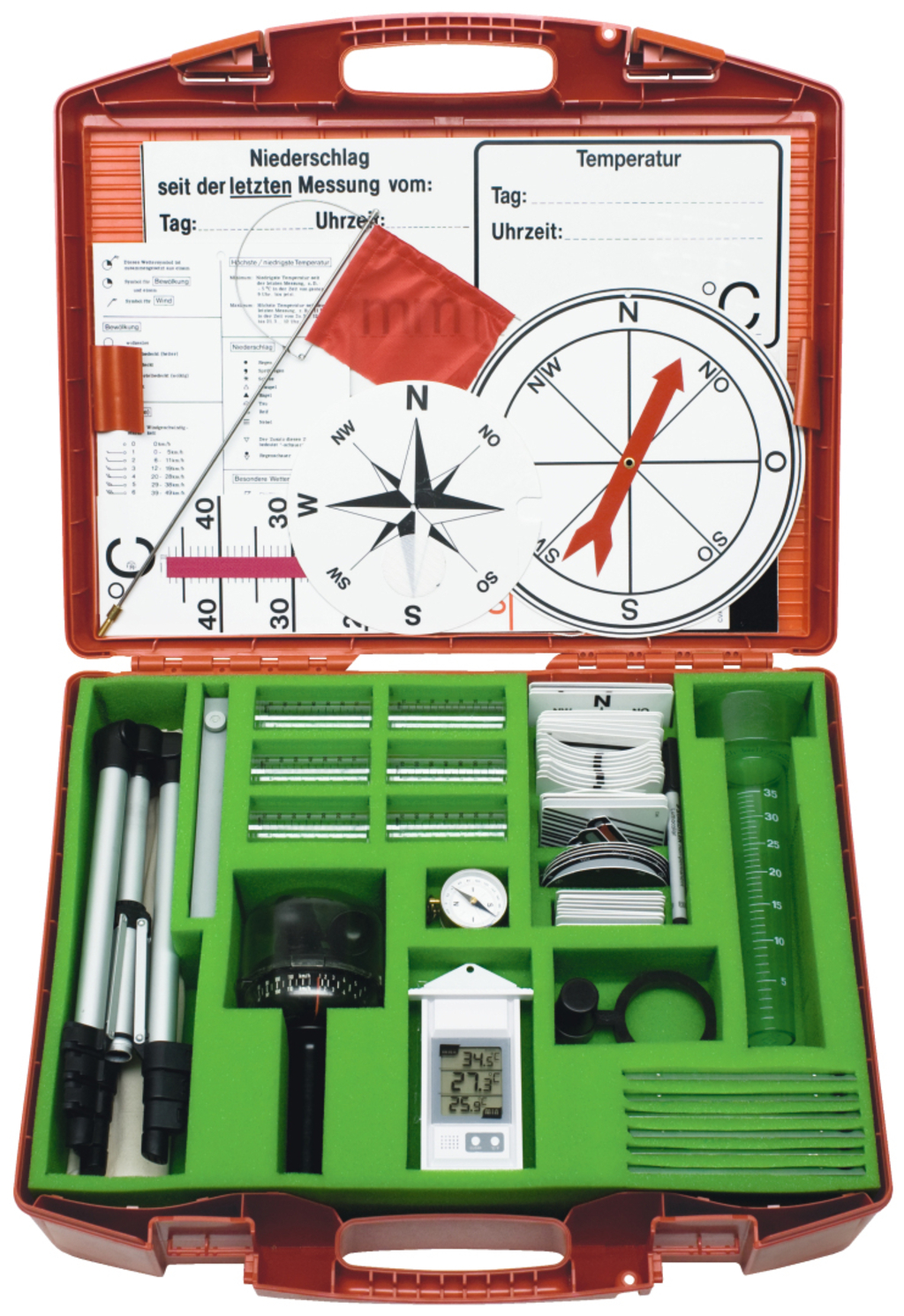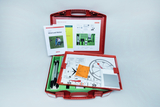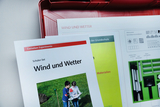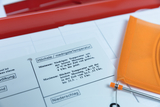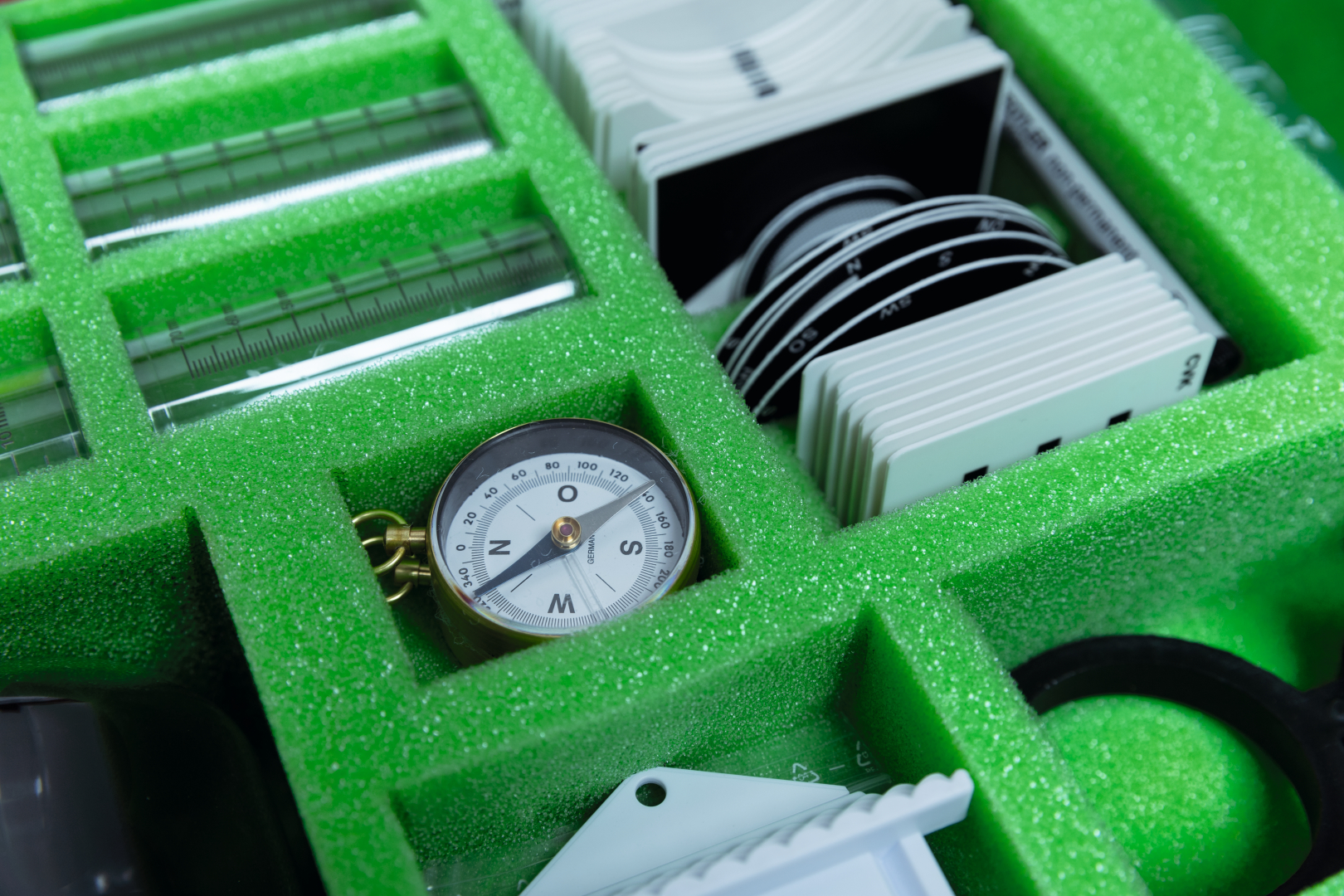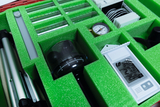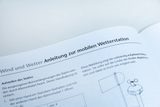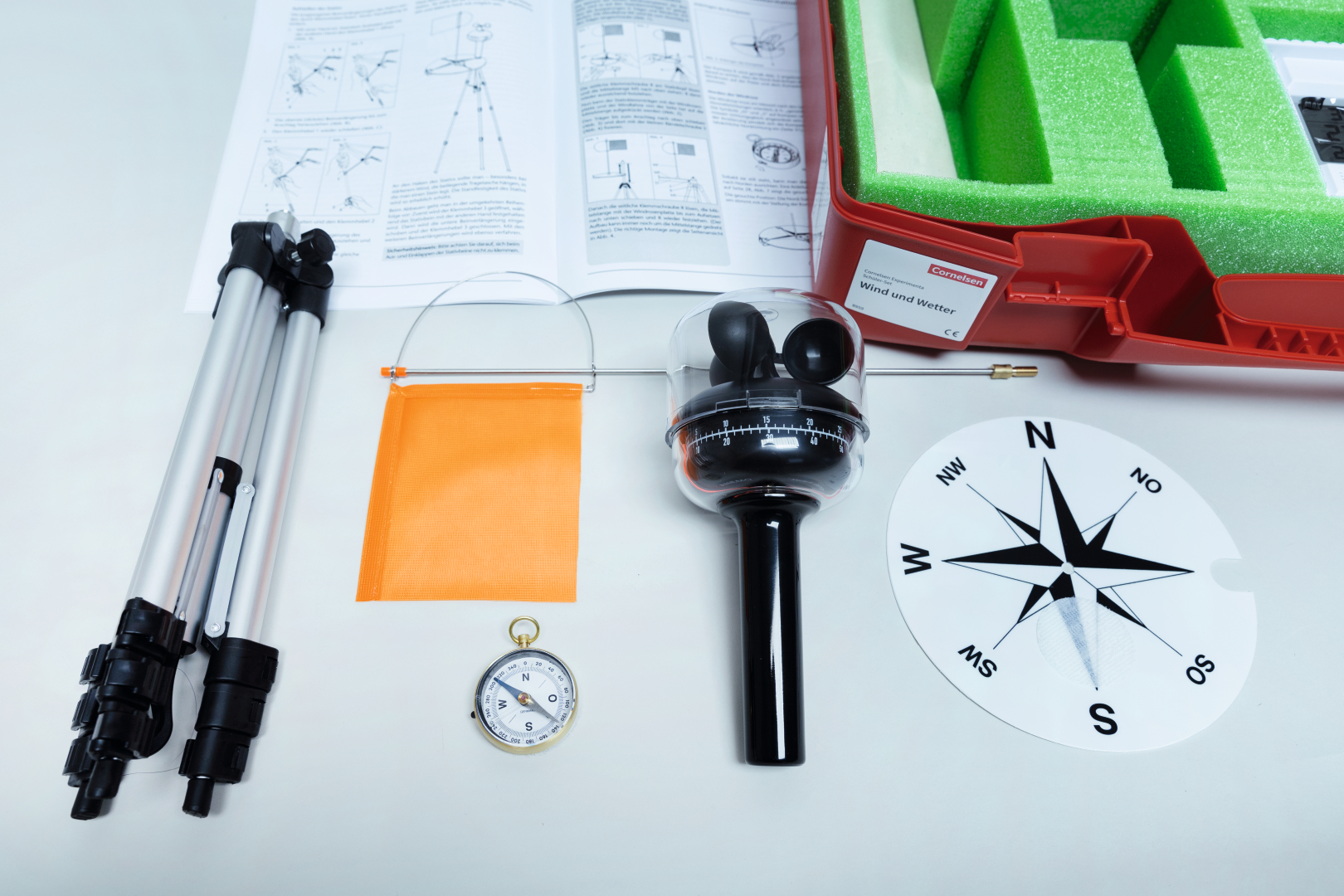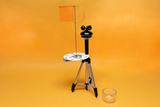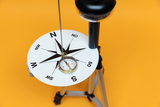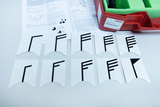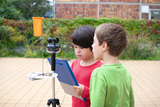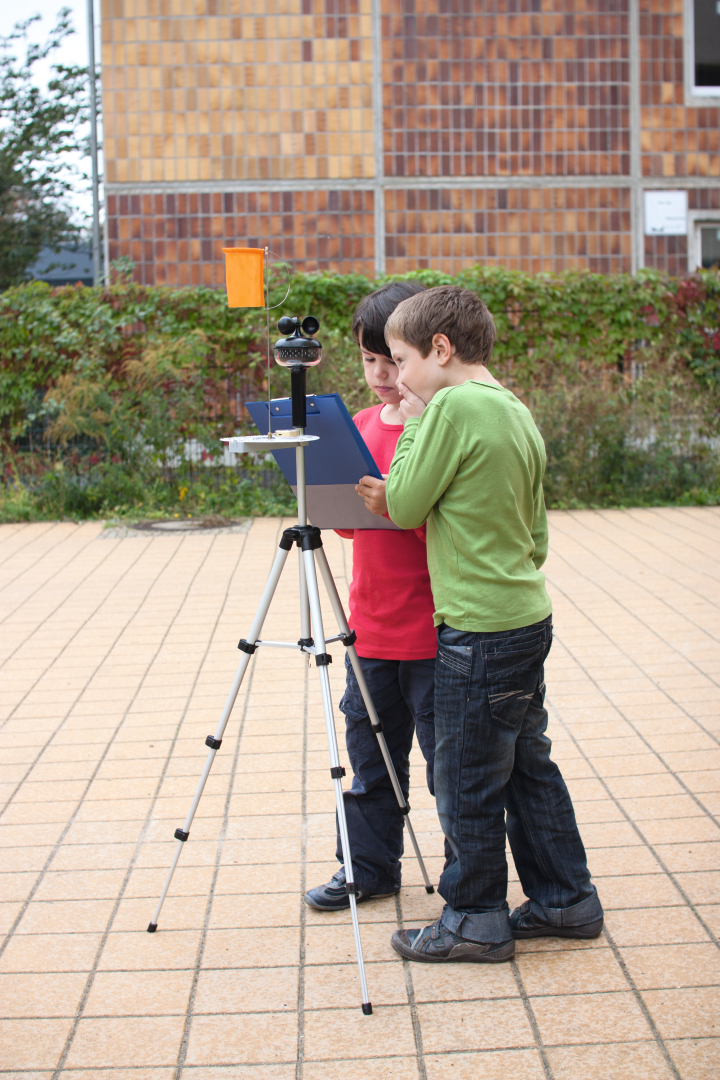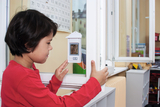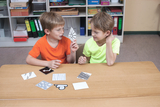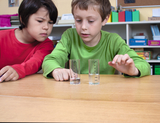Students kit Wind and weather
Students kit Wind and weather
Children learn how to recognise, distinguish and measure different weather phenomena such as
- temperatures
- cloud cover
- wind direction and force
- precipitation
They also learn reading and using the various weather symbols used on official weather forecast charts.
At the same time basic scientific skills like observation, documentation and evaluation as well as the use of instruments are practised and encouraged.
Including a teacher’s manual ‘Experiments in work-stations: Wind and weather’ wiith copy templates covering 6 workstations with 2 childern each.
Age 9-12
Materials for up to 6 workstations (for 12 children)
Technical specifications
Size of kit: 540 x 450 x 150 mm
The students can determine the degree of cloudiness by observing the sky.
The students learn the points of the compass, N, S, E, W, NE, NW, SE, SW and their representation on a compass card.
The students can describe weather conditions in everyday language and learn about the four specified weather elements.
The students can correctly measure the air temperature and record the findings.
The students recognize the possible applications of a maximum and minimum thermometer (direct measurement and “storage” of measured figures) they can read the displays of the max. and min. thermometer.
The students enter the temperature readings (current, maximum, minimum) in a table and later compile the figures to form a temperature curve.
The students are introduced to wind measuring devices based on the principle of the anemometer, which they learn how to use. They can read the wind strength and speed and use various units of measure.
The students can record the level of rainfall in mm with the aid of a rain gauge.
The students describe or draw the symbols with the supplied water-soluble marker onto the plastic cards, then affix them to the board.
The students can, on their own, observe the weather elements: clouds, temperature, wind (direction, speed) and precipitation (type, quantity) over a long period of time and enter the observed data in a table.
From a weather table, the students can read the weather conditions on a single day and the course of the weather over several days.
- 1 × Demo-Thermometer-Model
- 6 × Thermometer, student type–25 to +50°C
- 6 × Rain collector with graduation, 80x35 mm
- 1 × Rain gauge with adapter
- 2 × Compass with pointer lock45 mmØ
- 1 × Carrier bag
- 2 × Adhesive felt board 450x350 mm
- 1 × Anemometer, mechanic
- 1 × Telescopic tripod for anemometer
- 1 × Clamping arm for 30598
- 1 × Wind vane
- 1 × Felt pen, water soluble
- 1 × Tray 510x360x20 mm
- 1 × Plastic case ca.540x450x150 mm
- 1 × Battery cells, 1,5 V, R 3set of 4 pcs.
- 1 × Compass card w.adjustablearrow, 250 mm dia.
- 1 × Foam insert for 8959, 515x370x105 mm
- 1 × Storing diagram (Wind and Weather)
- 1 × Compass card, plastic 180 mm dia.
- 1 ×
- 2 ×
- 1 ×
- 5 ×
- 1 ×
- 1 ×
- 1 ×
- 1 ×
